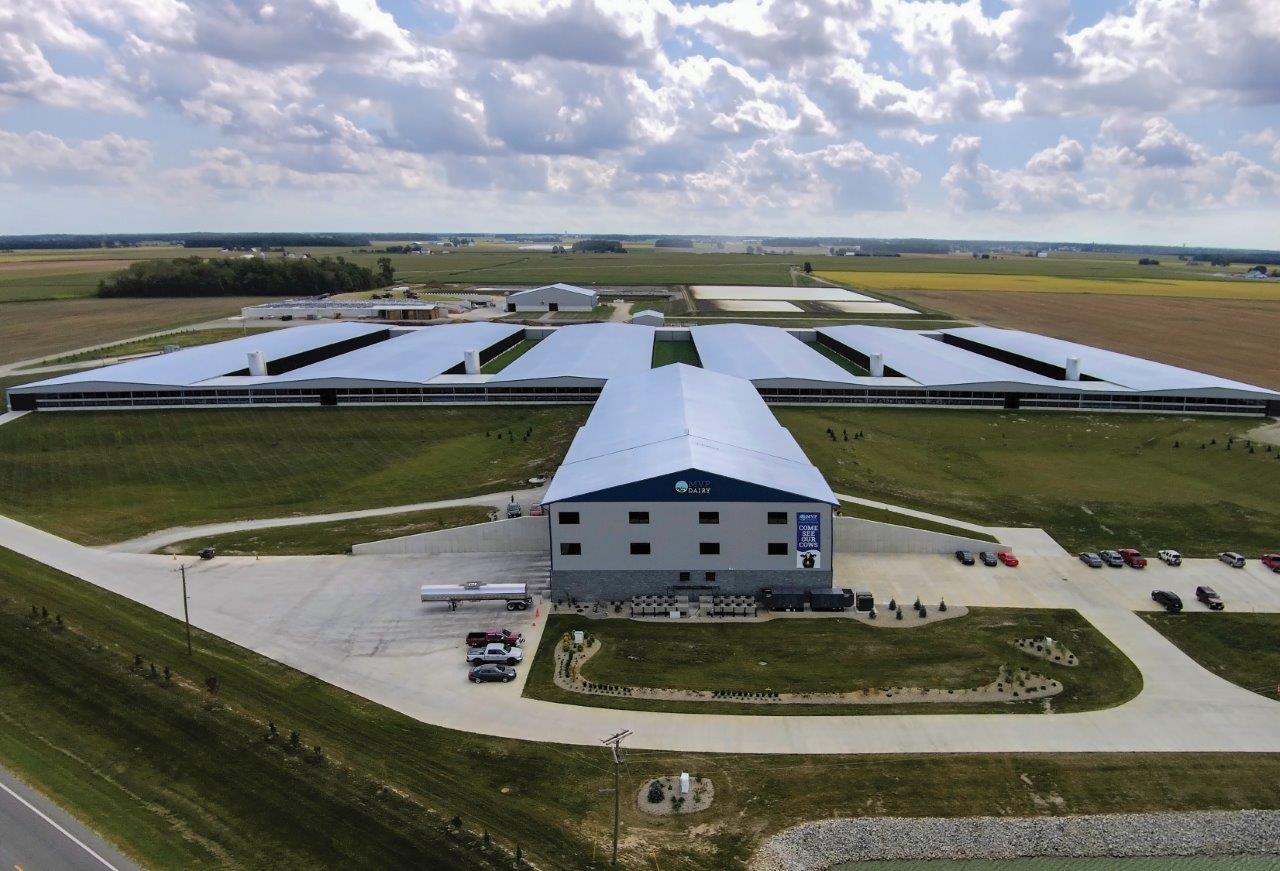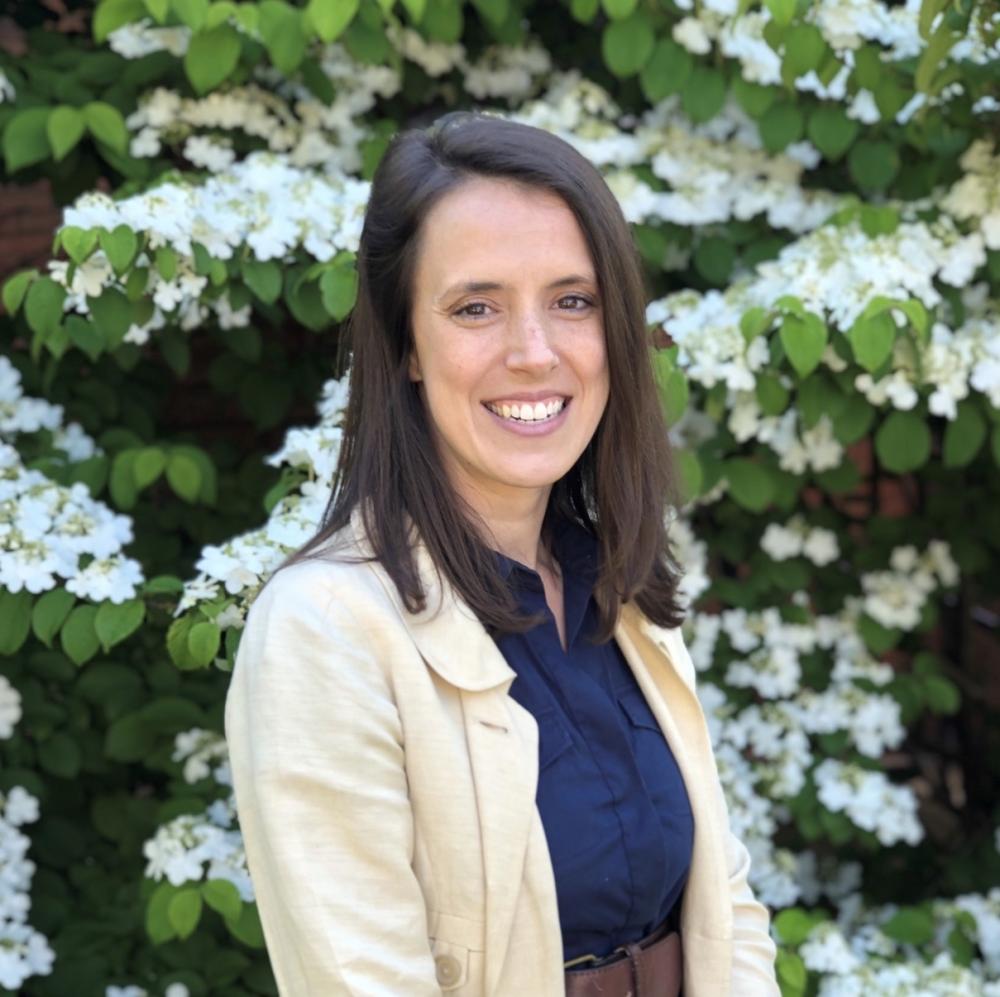
Ken McCarty of MVP Dairy walks through one of the farm's barns in Celina, Ohio. (Image courtesy of MVP Dairy.)
As climate concerns intensify, one particular source of emissions, animal agriculture, has come under intense scrutiny due to its contribution to global greenhouse gas emissions. Animal agriculture accounts for roughly 14.5 percent of the world’s total emissions, according to the United Nations Food and Agriculture Organization.
Cattle farming in particular poses several environmental challenges, primarily due to methane emissions, an especially potent greenhouse gas. Livestock and feed production are often drivers of deforestation, habitat loss and water consumption, leaving many to wonder if cattle farming can coexist in a world increasingly focused on decarbonization and biodiversity.
When asked if animal agriculture can ever be compatible with a sustainable, healthy planet, fourth-generation dairyman Ken McCarty said, “I spend a lot of time thinking about that. What I think it comes down to is that we all have to eat. As global populations increase and demand for protein increases, we as food producers have a responsibility to the world to do as good a job as we possibly can … Every farm has very specific regional or geographic limitations, and every farm is going to differ in technical and financial capability. To take a prescriptive stance on what regenerative agriculture is or isn’t leaves people out of the conversation when what we need to be doing is engaging more farmers and producers in this conversation and meeting people where they are at.”
On-farm practices
McCarty’s farm, MVP Dairy, is jointly run by two families, and they are transforming the ways in which they manage their farm operations. “We view sustainability as an all-encompassing drive for restoring and sustaining human and environmental communities,” McCarty said. “Being able to sustain an industry for the next generation is critically important and near and dear to our hearts.”
McCarty’s approach to farming begins with soil health. He deploys a variety of different practices to enhance vitality of soil, such as minimum till or no-till methods that minimize the disruption to soil structure. In turn, that increases water retention and carbon sequestration.
He also uses cover crops, which deliver many benefits. “Cover crops provide an opportunity to bring more biodiversity to any acre of land, enhance microbiological and fungal activity of the soil, and minimize wind and water erosion,” McCarty said.
Crop rotation is another key strategy for McCarty’s operations. By rotating different crops, he can break up weed and pest cycles and reduce the need for chemical interventions, like pesticides and herbicides.
“Minimizing the use of chemicals is part and parcel to our regenerative agriculture strategy,” he said. “This approach not only supports soil health but also improves the overall biodiversity of the farm.”
However, McCarty emphasized that regenerative practices are site-specific and a farming practice that works well in one area may not translate to another location with different climate and soils.
“Not every region is suited to easily adopt cover crops,” he said. “Our farms are spread around different geographies, so the challenges and opportunities we face in deploying different regenerative and sustainable practices in different regions give us the ability to always drive progress.”

The business case for regenerative dairy
Regenerative farming practices can be environmentally beneficial, but some farmers struggle with making the business case to invest in the equipment and education needed to transform conventional operations into regenerative. Farmers have to take a long view, McCarty said.
“To put a [return on investment] on the deployment of regenerative agriculture practices, you have to measure in a long-term time scale,” he said. “Converting to no-till takes different equipment, and equipment is expensive. It takes time to grow that skill set.”
This can make it difficult to determine the financial success of certain practices in the short term, especially when business is in a down-cycle. "Agricultural margins are extremely thin and volatile," McCarty said. "If a farmer is focused heavily on survival, shifting gears to risky ventures like adopting a new method of running your farm and business can be a daunting task. Figuring out ways to de-risk those conversions is important."
However, there are some immediate financial benefits. For example, using composted manure solids in place of commercial fertilizers can offer savings, though the exact return on investment can vary year to year based on fertilizer prices and the amount that needs to be applied, McCarty said. Moreover, practices like integrating livestock into crop systems can introduce valuable micronutrients into the soil, boosting crop health.
McCarty is also optimistic about emerging markets for regenerative products, such as carbon credits, though he stresses the importance of integrity in these markets. “These marketplaces have to be done with integrity,” he said. “We as society can’t afford to slow down the pace of that progress because bad actors get involved and taint the integrity of those markets.”
Progress over perfection
Regenerative agriculture is not a silver bullet for the climate crisis, but McCarty believes that the incremental gains are important.
“Our dad always drilled into us that the one thing that is exciting about agriculture is that there is always something to work on, always something that we can improve upon and do better,” McCarty said. “We believe in progress over perfection, and regenerative agriculture is a part of that. It just so happens that this kind of improvement makes the world a better place too.”

Mary Riddle is the director of sustainability consulting services for Obata. As a former farmer and farm educator, she is passionate about regenerative agriculture and sustainable food systems. She is currently based in Florence, Italy.














